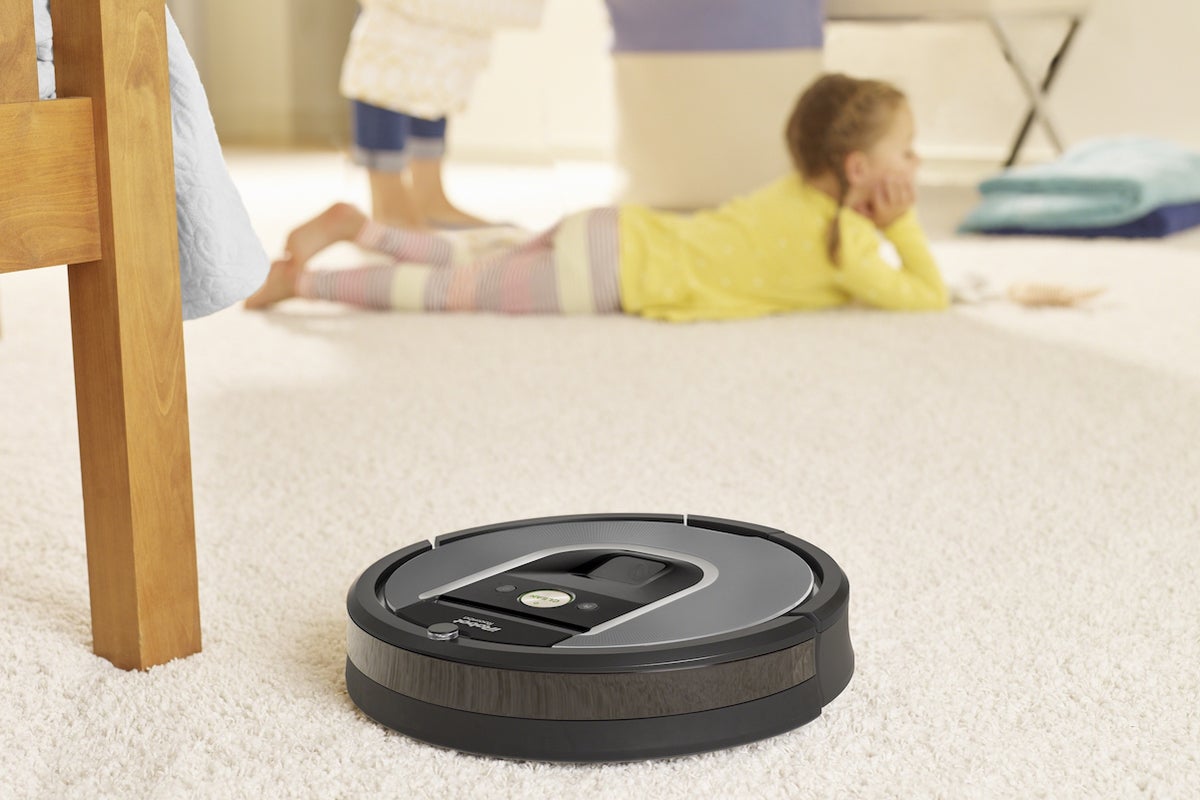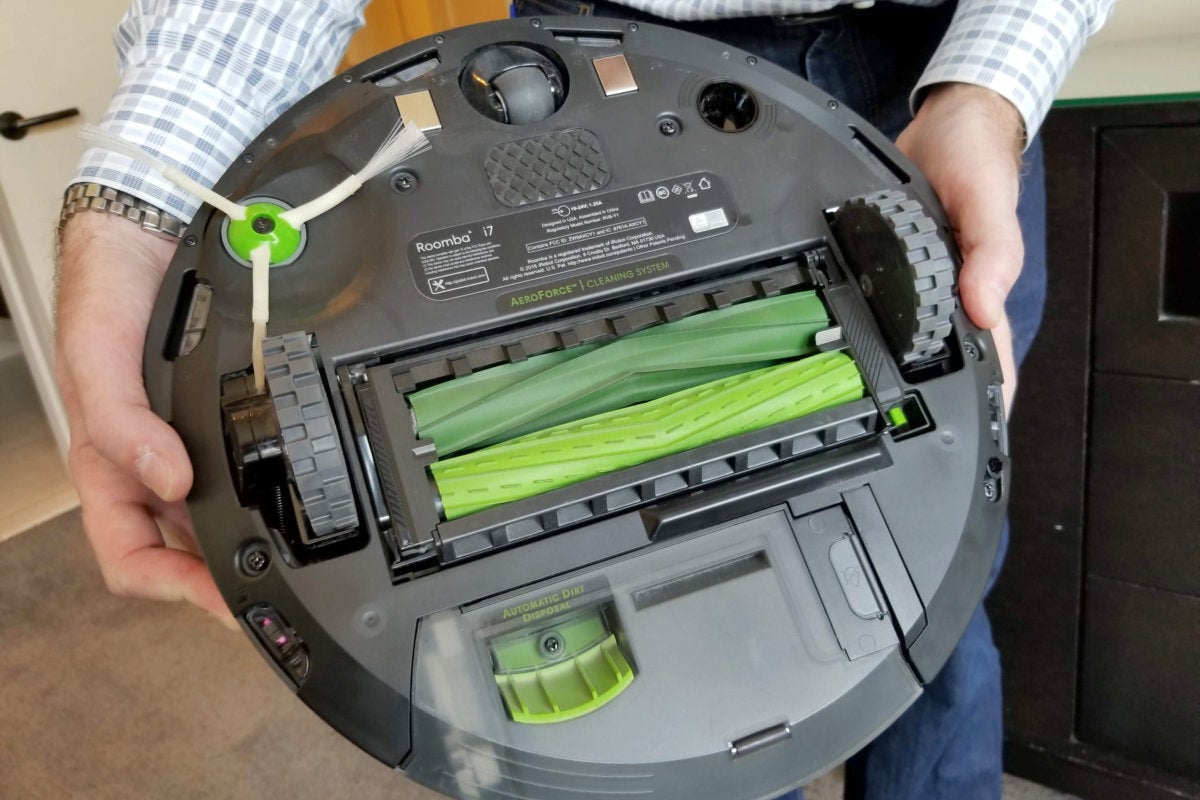How Often Does a Roomba Need to Be Emptied
6 things to know before you buy a robot vacuum
Robot vacuums are tops when it comes to keeping your floors clean, but they need more help than you might think.
![]() By
By
Senior Writer, TechHive |

Today's Best Tech Deals
Picked by TechHive's Editors
Top Deals On Great Products
Picked by Techconnect's Editors
It's been about six weeks since our family (finally) coughed up the cash for our very first robot vacuum, and I can honestly say that it was worth every penny. Our floors have never, ever been this clean, and that's pretty great given that we're almost always at home now. But as a relative novice to robot vacuums, I was in for a few unwelcome (but unsurprising, in retrospect) surprises during our first few days together.
Foolishly, I thought I'd be able to plug in the charging station, press the vacuum's "Clean" button, and voilà—it would clean the floors all by itself and scoot back home with a minimum of fuss, and with practically no effort on my part. Well… not quite.
While using a robot vacuum to clean your floors is still far easier than sweeping them yourself, they still require (as any experienced robot vacuum user will tell you) a fair amount of care and handling, and you'll almost certainly need to iron out some kinks during the first few cleanings.
That may sound disappointing, and indeed, I was bummed when my new Roomba got stuck in a closet and then failed to find its way back to home base on its maiden voyage. But following those first few bumps in the road, my robot vacuum has been performing more or less flawlessly over the past few weeks; more importantly, our floors have never been so clean.
So yes, if you're circling your first robot vacuum, I say go for it—but here are a few things to keep in mind about robot vacuums before you pull the trigger.
They do get stuck occasionally
Robot vacuums are rightly famous for their ability to find their way around your home, avoiding obstacles like furniture, loose shoes, and the like. But even with their optical sensors and ability (in pricier models) to map your home's floor plan, even the best robot vacuums can find their way into situations that they can't get out of.
That said, if you follow your robotic buddy during its first few forays around your house, you can generally identify the trouble spots and do something about them. My Roomba, for example, repeatedly got stuck when it rolled on top of a rubber doorstop and couldn't roll back off. My solution: Pick the doorstop off the floor before beginning a cleaning.
I also noticed that the Roomba would stop dead in its tracks when it approached the stairway to our basement and detected the sudden drop. After some deliberation, I decided to block the doorway to the stairwell (which lacks an actual door) with a nearby bench.
Of course, pricier robot vacuums that create their own floor plans can be programmed to avoid trouble spots, and there are also accessories (such as iRobot's $60 Virtual Wall Barriers) that allow you to create a virtual fence that your robot won't pass. But with a little ingenuity, you can come up with low-tech solutions that don't cost extra.
They eat power cords, shoelaces, and speaker cables for breakfast
On my first day with my new Roomba, I let it run wild through my apartment, and one of the first things it did was roll under our bed and gobble up some extension cords. Once I yanked the cables out of the Roomba (no permanent damage was done) and set it on its way again, the robot made a beeline for our closet and began snacking on shoelaces. And when I took the Roomba downstairs, it found its way to the entertainment room and had its way with my speaker cables. Not good.
Again, there are plenty of no-cost solutions that could work, such as picking any loose cables off the floor before starting a cleaning cycle, or closing closet doors to keep shoes hidden. If your budget allows it, you could also instruct a (pricey) floor-scanning robot vacuum to avoid areas with cords and cables, or use virtual wall accessories to block them off.
They need to be emptied
Well, duh, right? I know, but for whatever reason, this particular fact of life about robot vacuums caught me off guard, even though I've emptied the dust bag in my dumb vacuum more times than I care to remember.
But yes, most robot vacuums do need to be emptied on a regular basis, or after every cleaning (in the case of my Roomba). That said, there are some self-emptying models that automatically dump debris into a bin in their home base (which in turn needs to be emptied every once in awhile), although as you can probably guess, self-emptying vacuums tend to be the most expensive.
I should also add, however, that emptying your robot vacuum can be a curiously satisfying experience. In my household, emptying the Roomba has become something of a family event, where we marvel at how much dust and dirt the Roomba has managed to sweep up.
You need to clean their brushes
Just as the dust bins on a robot vacuum need to be emptied regularly, so do their brushes need to be cleaned. My Roomba (via the iRobot mobile app) bugs me every several cleanings or so to remove its roller and clean out the debris and hair that gets wrapped around its bristles.
The procedure only takes a few minutes (the brushes on my particular vacuum are a snap to remove and replace), so it's not a huge deal, but it's a chore you don't want to skip; if too much hair builds up in your robot, it could be permanently damaged.
 Martyn Williams/IDG
Martyn Williams/IDG The brushes and bristles on a robot vacuum need to be cleaned on a regular basis, particularly when it comes to hair buildup.
They can be noisy
If you're picturing having your new robot vacuum clean your floors while you're asleep, think again. Even the quietest models tend to make a racket when they're zipping around your house, banging into your walls and furniture as they go. The noise of my Roomba doesn't bother me while I'm working (although it loves to nuzzle my feet if I'm sitting at our dining room table) or doing household chores, but it's bothersome when I'm trying to watch a movie, and I certainly wouldn't want it running while I'm trying to sleep.
You can't put the home base just anywhere
While it's tempting to tuck your robot vacuum's charging station in a corner, you're probably going to need to put it somewhere a bit more conspicuous. The base station for my Roomba, for example, needs to sit against a flat wall, with about 1.5 feet of free space on either side and four feet of clearance in front.
The placement requirements for different makes and models will vary, of course; but generally speaking, you'll need to place the base station somewhat in the open. Tuck the base out of the way and your robot might have trouble finding it so it can dock and recharge its battery. Also, don't forget that the charging station needs to be reasonably close to a power outlet.
Note: When you purchase something after clicking links in our articles, we may earn a small commission. Read our affiliate link policy for more details.
Ben has been writing about technology and consumer electronics for more than 20 years. A PCWorld contributor since 2014, Ben joined TechHive in 2019, where he covers smart home and home entertainment products.
How Often Does a Roomba Need to Be Emptied
Source: https://www.techhive.com/article/3540032/what-you-need-to-know-before-buying-a-robot-vacuum.html
0 Response to "How Often Does a Roomba Need to Be Emptied"
Post a Comment